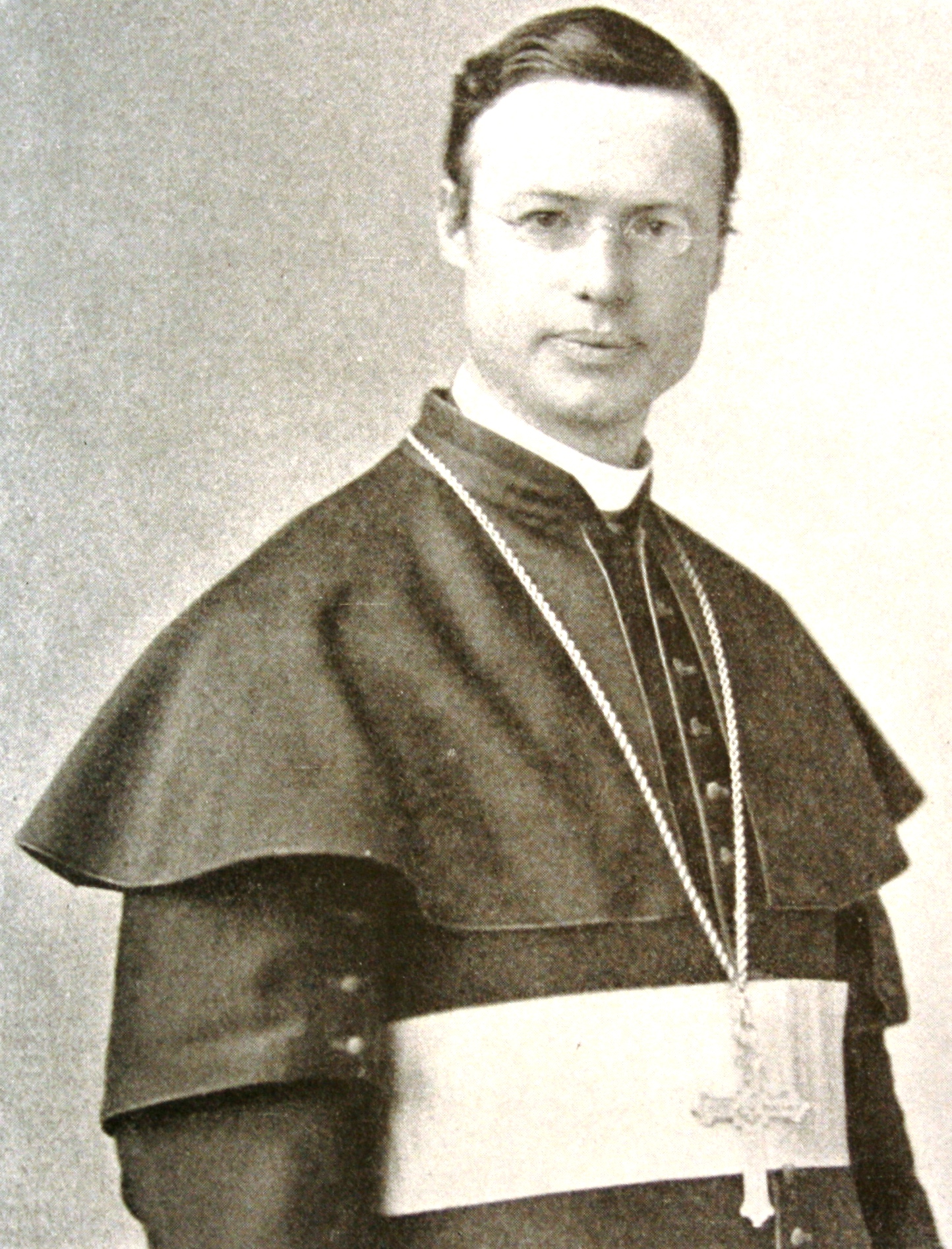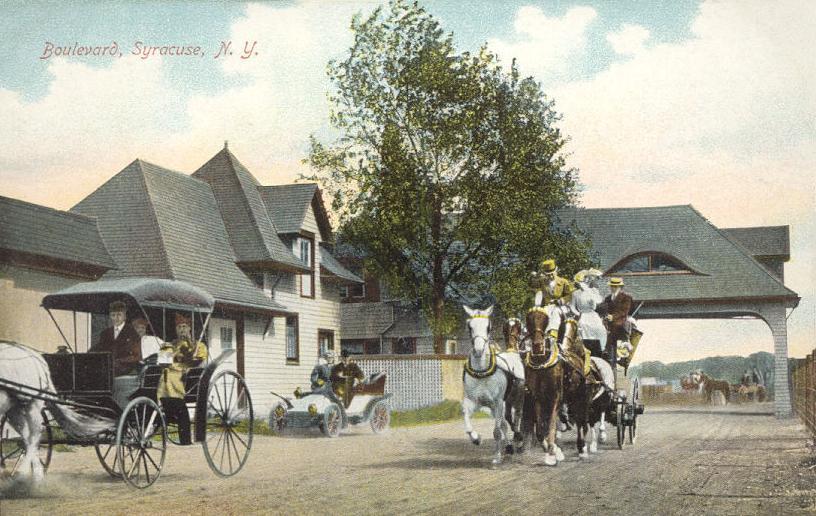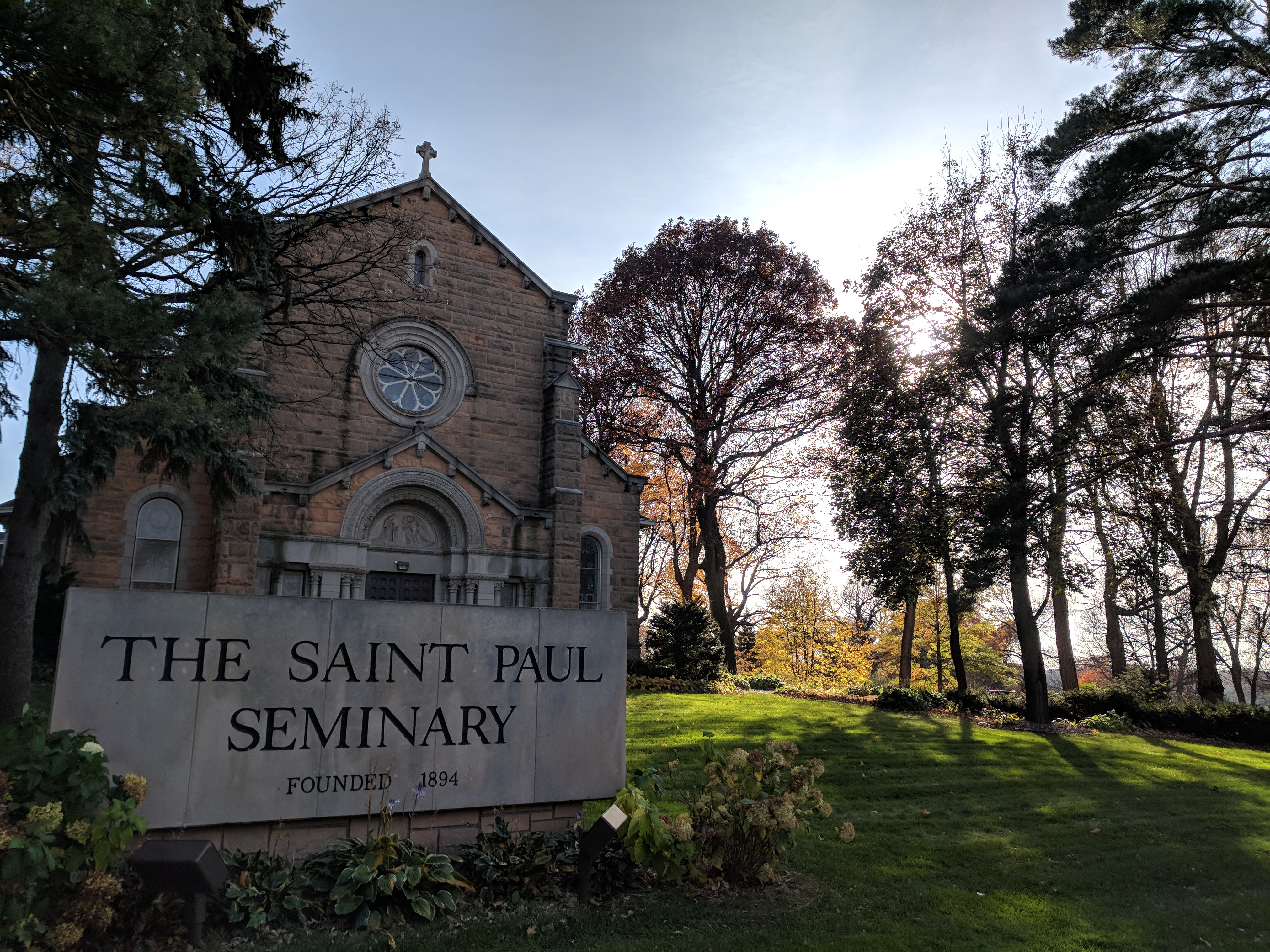|
Daniel Joseph Curley
Daniel Joseph Curley (June 16, 1869 – August 3, 1932) was an American prelate of the Roman Catholic Church. He served as Bishop of Syracuse from 1923 until his death in 1932. Biography Daniel Curley was born in New York City to Michael and Margaret (née Swan) Curley. He studied at St. Francis Xavier College and afterwards St. Joseph's Seminary in Troy, where he befriended Patrick Joseph Hayes (future Archbishop of New York and a cardinal). He furthered his studies at the Pontifical North American College in Rome, and was there ordained to the priesthood on May 19, 1894. Following his return to New York, he served as a curate at thChurch of the Holy Namein Manhattan. He became secretary to Archbishop Michael Corrigan in 1901, and the founding pastor of Our Lady of Solace Church in The Bronx in 1902. In 1921 his name was suggested by Archbishop Patrick Hayes as an auxiliary bishop of New York. On February 19, 1923, Curley was appointed the third Bishop of Syracuse b ... [...More Info...] [...Related Items...] OR: [Wikipedia] [Google] [Baidu] |
Prelate
A prelate () is a high-ranking member of the Christian clergy who is an ordinary or who ranks in precedence with ordinaries. The word derives from the Latin , the past participle of , which means 'carry before', 'be set above or over' or 'prefer'; hence, a prelate is one set over others. The archetypal prelate is a bishop, whose prelature is his particular church. All other prelates, including the regular prelates such as abbots and major superiors, are based upon this original model of prelacy. Related terminology In a general sense, a "prelate" in the Roman Catholic Church and other Christian churches is a bishop or other ecclesiastical person who possesses ordinary authority of a jurisdiction, i.e., of a diocese or similar jurisdiction, e.g., ordinariates, apostolic vicariates/ exarchates, or territorial abbacies. It equally applies to cardinals, who enjoy a kind of "co-governance" of the church as the most senior ecclesiastical advisers and moral representatives of th ... [...More Info...] [...Related Items...] OR: [Wikipedia] [Google] [Baidu] |
Michael Corrigan
Michael Augustine Corrigan (August 13, 1839May 5, 1902) was an American prelate of the Roman Catholic Church who served as the third archbishop of New York from 1885 to 1902. Early life Michael Augustine Corrigan was born August 13, 1839, in Newark, New Jersey, the fifth of nine children of Thomas and Mary English Corrigan, both of whom had emigrated from Ireland. Thomas Corrigan owned a retail grocery and liquor business in Newark, and the family's well-to-do status allowed Michael to pursue his educational interests. He attended St. Mary's College in Wilmington, Delaware, from 1853 to 1855, Mount Saint Mary's University in Emmitsburg, Maryland from 1855 to 1857, spent a year in Europe, and received his bachelor's degree from Mount Saint Mary's in 1859. He became a member of the first class at the North American College in Rome, was ordained to the priesthood in September 1863 at the Basilica of St. John Lateran, and received a doctorate of divinity in 1864. ... [...More Info...] [...Related Items...] OR: [Wikipedia] [Google] [Baidu] |
Crypt
A crypt (from Latin ''crypta'' "vault") is a stone chamber beneath the floor of a church or other building. It typically contains coffins, sarcophagi, or religious relics. Originally, crypts were typically found below the main apse of a church, such as at the Abbey of Saint-Germain en Auxerre, but were later located beneath chancel, naves and transepts as well. Occasionally churches were raised high to accommodate a crypt at the ground level, such as St Michael's Church in Hildesheim, Germany. Etymology The word "Crypt" developed as an alternative form of the Latin "vault" as it was carried over into Late Latin, and came to refer to the ritual rooms found underneath church buildings. It also served as a vault for storing important and/or sacred items. The word "Crypta", however, is also the female form of ''crypto'' "hidden". The earliest known origin of both is in the Ancient Greek '' κρύπτω'' (krupto/krypto), the first person singular indicative of the verb "to conc ... [...More Info...] [...Related Items...] OR: [Wikipedia] [Google] [Baidu] |
Syracuse, New York
Syracuse ( ) is a City (New York), city in and the county seat of Onondaga County, New York, Onondaga County, New York, United States. It is the fifth-most populous city in the state of New York following New York City, Buffalo, New York, Buffalo, Yonkers, New York, Yonkers, and Rochester, New York, Rochester. At the United States Census 2020, 2020 census, the city's population was 148,620 and its Syracuse metropolitan area, metropolitan area had a population of 662,057. It is the economic and educational hub of Central New York, a region with over one million inhabitants. Syracuse is also well-provided with convention sites, with a Oncenter, downtown convention complex. Syracuse was named after the classical Greek city Syracuse, Sicily, Syracuse (''Siracusa'' in Italian), a city on the eastern coast of the Italian island of Sicily. Historically, the city has functioned as a major Crossroads (culture), crossroads over the last two centuries, first between the Erie Canal and its ... [...More Info...] [...Related Items...] OR: [Wikipedia] [Google] [Baidu] |
Cloister
A cloister (from Latin ''claustrum'', "enclosure") is a covered walk, open gallery, or open arcade running along the walls of buildings and forming a quadrangle or garth. The attachment of a cloister to a cathedral or church, commonly against a warm southern flank, usually indicates that it is (or once was) part of a monastic foundation, "forming a continuous and solid architectural barrier... that effectively separates the world of the monks from that of the serfs and workmen, whose lives and works went forward outside and around the cloister." Cloistered (or ''claustral'') life is also another name for the monastic life of a monk or nun. The English term ''enclosure'' is used in contemporary Catholic church law translations to mean cloistered, and some form of the Latin parent word "claustrum" is frequently used as a metonymic name for ''monastery'' in languages such as German. History of the cloister Historically, the early medieval cloister had several antecedents: the ... [...More Info...] [...Related Items...] OR: [Wikipedia] [Google] [Baidu] |
Society For The Propagation Of The Faith
The Society for the Propagation of the Faith (Latin: ''Propagandum Fidei'') is an international association coordinating assistance for Catholic missionary priests, brothers, and nuns in mission areas. The society was founded in Lyon, France, in 1822, by Pauline Jaricot. It is the oldest of four Pontifical Mission Societies of the Catholic Church. Origin and development In 1815, Bishop Louis William Valentine Dubourg of New Orleans, Louisiana was in Lyon collecting alms for his diocese, which was in a precarious condition. To a Mrs. Petit, whom he had known in the United States, he expressed the idea of founding a charitable association for the support of Louisiana missions, which suggestion she cordially embraced, but could procure only small alms among her friends and acquaintances. [...More Info...] [...Related Items...] OR: [Wikipedia] [Google] [Baidu] |
Consecrator
A consecrator is a bishop who ordains someone to the episcopacy. A co-consecrator is someone who assists the consecrator bishop in the act of ordaining a new bishop. The terms are used in the canon law of the Catholic Church, Lutheran Churches, in Anglican communities, and in the Eastern Orthodox Church. History The church has always sought to assemble as many bishops as possible for the election and consecration of new bishops. Although due to difficulties in travel, timing, and frequency of consecrations, this was reduced to the requirement that all comprovincial (of the same province) bishops participate. At the Council of Nicæa it was further enacted that "a bishop ought to be chosen by all the bishops of his province, but if that is impossible because of some urgent necessity, or because of the length of the journey, let three bishops at least assemble and proceed to the consecration, having the written permission of the absent." Consecrations by the Pope were exempt f ... [...More Info...] [...Related Items...] OR: [Wikipedia] [Google] [Baidu] |
William Turner (Bishop Of Buffalo)
William Turner (April 8, 1871 – July 10, 1936) was an Ireland, Irish-born prelate of the Roman Catholic Church who served as bishop (Catholic Church), bishop of the Roman Catholic Diocese of Buffalo, Diocese of Buffalo in New York from 1919 until his death in 1936. He was ordained in 1893, and spent his early years as a priest teaching in various institutions. Upon his appointment as Bishop of Buffalo he was occupied with pastoral duties in a very large diocese. Biography Early life William Turner was born at Kilmallock, Ireland. He received his education at Mungret College in Limerick, the Royal University of Ireland, the Pontifical Urbaniana University, Propaganda College in Rome, and the Institut Catholique de Paris. Turner was Holy Orders, ordained to the priesthood on August 13, 1893. That same year, Turner was awarded the Benemerenti medal for a commentary on St. Thomas's ''De Anima''. The following year he began his career as a professor of Latin and logic at the U ... [...More Info...] [...Related Items...] OR: [Wikipedia] [Google] [Baidu] |
Edmund Gibbons
Edmund Francis Gibbons (September 16, 1868 – June 19, 1964) was an American prelate of the Roman Catholic Church. He served as Bishop of Albany from 1919 to 1954. Biography Edmund Gibbons was born in White Plains, New York, to James and Joanna (née Ray) Gibbons, who were Irish immigrants. His father was a laborer who helped build the New York State Capitol. After graduating from Niagara University in 1887, he studied at the Pontifical North American College in Rome from 1887 to 1893. He was ordained to the priesthood on May 27, 1893. He then served as secretary to Bishop Stephen V. Ryan (1893-1896), superintendent of Catholic schools in the Buffalo Diocese (1900-1916), and pastor of St. Vincent's Church in Attica (1904-1915). He was pastor of St. Teresa's Church in Buffalo from 1916 to 1919. On March 10, 1919, Gibbons was appointed the sixth Bishop of Albany by Pope Benedict XV. He received his episcopal consecration on the following March 25 from Archbishop Gi ... [...More Info...] [...Related Items...] OR: [Wikipedia] [Google] [Baidu] |
Consecration
Consecration is the solemn dedication to a special purpose or service. The word ''consecration'' literally means "association with the sacred". Persons, places, or things can be consecrated, and the term is used in various ways by different groups. The origin of the word comes from the Latin stem ''consecrat'', which means dedicated, devoted, and sacred. A synonym for consecration is sanctification; its antonym is desecration. Buddhism Images of the Buddha and bodhisattvas are ceremonially consecrated in a broad range of Buddhist rituals that vary depending on the Buddhist traditions. Buddhābhiseka is a Pali and Sanskrit term referring to these consecration rituals. Christianity In Christianity, consecration means "setting apart" a person, as well as a building or object, for God. Among some Christian denominations there is a complementary service of "deconsecration", to remove a consecrated place of its sacred character in preparation for either demolition or sale for s ... [...More Info...] [...Related Items...] OR: [Wikipedia] [Google] [Baidu] |
Bishop (Catholic Church)
In the Catholic Church, a bishop is an ordained minister who holds the fullness of the sacrament of holy orders and is responsible for teaching doctrine, governing Catholics in his jurisdiction, sanctifying the world and representing the Church. Catholics trace the origins of the office of bishop to the apostles, who it is believed were endowed with a special charism and office by the Holy Spirit at Pentecost. Catholics believe this special charism and office has been transmitted through an unbroken succession of bishops by the laying on of hands in the sacrament of holy orders. Diocesan bishops—known as eparchs in the Eastern Catholic Churches—are assigned to govern local regions within the Catholic Church known as dioceses in the Latin Church and eparchies in the Eastern Churches. Bishops are collectively known as the College of Bishops and can hold such additional titles as archbishop, cardinal, patriarch, or pope. As of 2020, there were approximately 5,60 ... [...More Info...] [...Related Items...] OR: [Wikipedia] [Google] [Baidu] |
Pope Pius XI
Pope Pius XI ( it, Pio XI), born Ambrogio Damiano Achille Ratti (; 31 May 1857 – 10 February 1939), was head of the Catholic Church from 6 February 1922 to his death in February 1939. He was the first sovereign of Vatican City from its creation as an independent state on 11 February 1929. He assumed as his papal motto "Pax Christi in Regno Christi," translated "The Peace of Christ in the Kingdom of Christ." Pius XI issued numerous encyclicals, including '' Quadragesimo anno'' on the 40th anniversary of Pope Leo XIII's groundbreaking social encyclical '' Rerum novarum'', highlighting the capitalistic greed of international finance, the dangers of socialism/communism, and social justice issues, and ''Quas primas'', establishing the feast of Christ the King in response to anti-clericalism. The encyclical ''Studiorum ducem'', promulgated 29 June 1923, was written on the occasion of the 6th centenary of the canonization of Thomas Aquinas, whose thought is acclaimed a ... [...More Info...] [...Related Items...] OR: [Wikipedia] [Google] [Baidu] |






